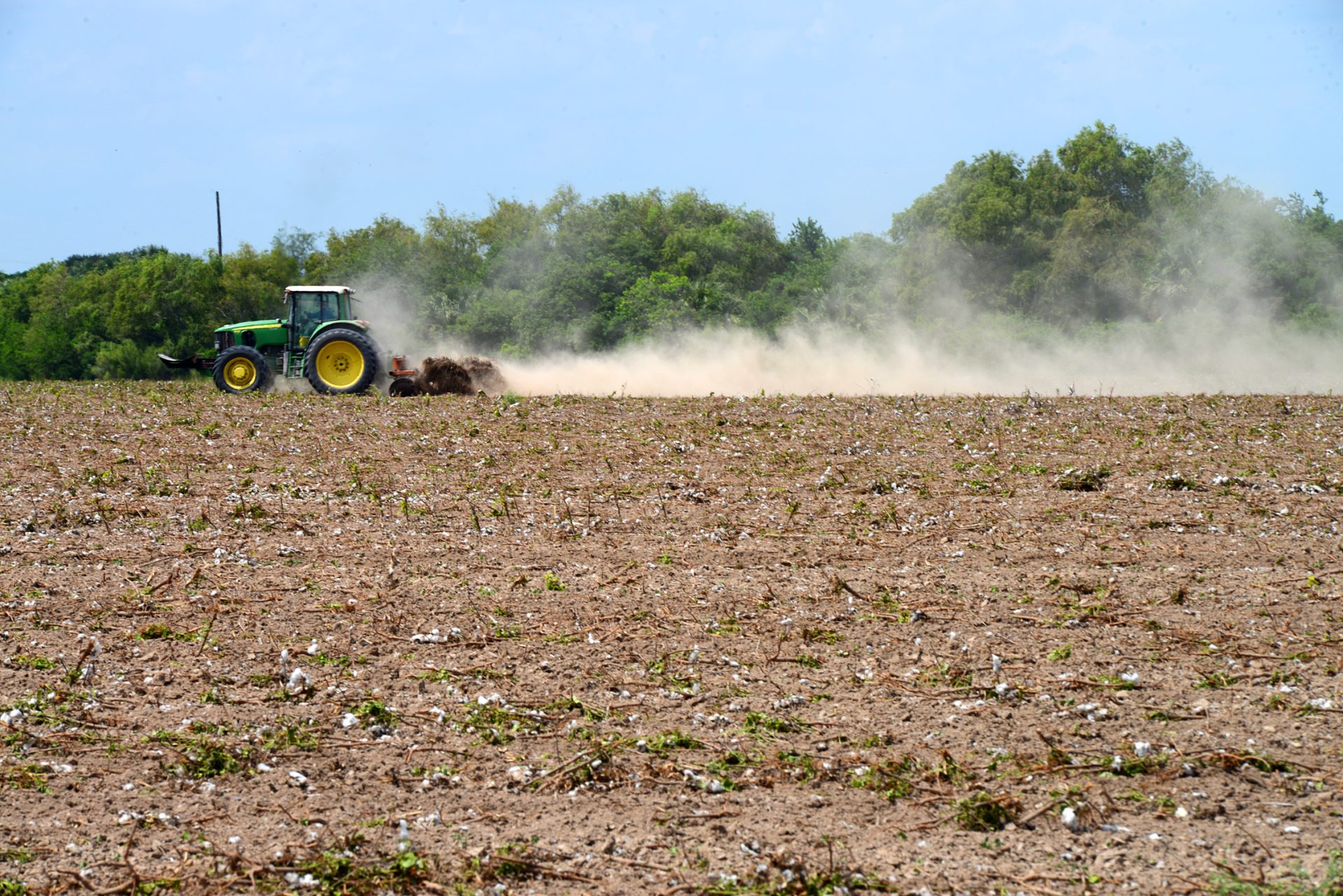 U.S. Rep. Monica De La Cruz details on the Trump administration’s announcement that Mexico will deliver the water that is owed to the U.S., during a press conference on the Texas-Mexico water at Texas Sweet Tuesday, April 29, 2025, in Mission. (Delcia Lopez | dlopez@themonitor.com)
U.S. Rep. Monica De La Cruz details on the Trump administration’s announcement that Mexico will deliver the water that is owed to the U.S., during a press conference on the Texas-Mexico water at Texas Sweet Tuesday, April 29, 2025, in Mission. (Delcia Lopez | dlopez@themonitor.com)MISSION — South Texas farmers may be feeling some relief soon as the Mexican government has agreed to uphold their end of a water treaty dating back to 1944.
The treaty went into effect nearly a century ago, in November 1945. It entailed a promise between the U.S. and its southern neighbor Mexico, to exchange water from major rivers including the Colorado River and Rio Grande.
Under this agreement, Mexico has an obligation to deliver 1.75 million acre-feet of water by the end of October.
The original text of this treaty describes the agreement as a “friendly cooperation,” animated by the “sincere spirit of cordiality.” It took into consideration the families on both sides of the border, who relied, and continue to rely, on these rivers for everyday life, from irrigating crops to simply having drinking water.
It was penned with the intent to avoid conflict while encouraging cooperation, but with increasing temperatures and population growth, pressure has been put on the water supply.
Due to severe drought conditions, Mexico fell behind on their water allotments to the U.S., and the South Texas agriculture industry has undoubtedly been hit.
However, last Monday, the U.S. Department of State announced that the Mexican government committed to making good on their end of the bargain by an immediate transfer of water from international reservoirs.
At a press conference in Mission on Tuesday, U.S. Rep. Monica De La Cruz, R-McAllen, standing in front of South Texas farmers, told reporters that for more than 80 years the Valley has faced a water crisis.
“That’s why when I was first elected, I passed in the House a resolution that strongly supported diplomatic pressure to ensure that the Mexican government fulfilled its water obligation every single year,” said De La Cruz.
At the press conference, Hidalgo County Judge Richard Cortez said this announcement would bring “short-term stability” to the community.
 A farmer tills the land on his John Deere tractor Thursday, Sept. 22, 2022, in Brownsville. (Miguel Roberts/The Brownsville Herald)
A farmer tills the land on his John Deere tractor Thursday, Sept. 22, 2022, in Brownsville. (Miguel Roberts/The Brownsville Herald)De La Cruz explained that she had met with President Donald Trump in February, and she enlightened him to Mexico’s failure to meet these obligations, adding that he was “shocked” to hear this.
She said that Trump committed to taking swift action against the Mexican government to ensure Mexico resumed paying their water debts.
On April 10, Trump posted to TruthSocial threatening to impose tariffs and sanctions on Mexico, unless they fulfilled their obligations.
Mexican President Claudia Sheinbaum attributed their lack of water deliveries to a severe four-year long drought felt by her country.
According to a Mexico Drought Report, as of April approximately 41% of the country is currently under drought conditions. In Texas, 57% of the state are under drought conditions as well.
The International Boundary and Water Commission shows that water levels at Falcon Dam remain low, at 12% capacity.
 Flanked by Dale Murden, president of Texas Citrus Mutual, U.S. Rep. Monica De La Cruz details on the Trump administration’s announcement that Mexico will deliver the water that is owed to the U.S., during a press conference on the Texas-Mexico water at Texas Sweet Tuesday, April 29, 2025, in Mission. (Delcia Lopez | dlopez@themonitor.com)
Flanked by Dale Murden, president of Texas Citrus Mutual, U.S. Rep. Monica De La Cruz details on the Trump administration’s announcement that Mexico will deliver the water that is owed to the U.S., during a press conference on the Texas-Mexico water at Texas Sweet Tuesday, April 29, 2025, in Mission. (Delcia Lopez | dlopez@themonitor.com)De La Cruz beamed as she announced that the Mexican government has agreed to deliver between 324,000 and 420,000 acre-feet of water through October.
She added that this was over a year’s worth of water in less than six months.
According to the state department, this amount is dependent on rainfall feeding Mexican tributary flows between July and October.
Mexico’s commitment also entails the immediate transfer of 56,750 acre-feet of water at Amistad Dam, with monthly transfers following, an increase in the U.S.’s share from one-third to one-half of Mexico’s Rio Grande Tributary flows and additional deliveries of San Juan River water.
In addition, parties from both sides of the border will meet in July, intending to discuss and evaluate hydrology conditions. The parties will continue to meet monthly until an agreement is made in which Mexico will continue to make up for their shortfalls from this five-year cycle.
The post ‘Short-term stability’ expected as RGV officials mark Mexico’s water commitment appeared first on MyRGV.com.
 (2).png)
 6 months ago
372
6 months ago
372







 English (US)
English (US)